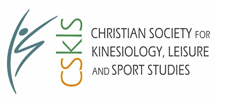Location
Solheim 106
Start Date
7-6-2024 11:00 AM
End Date
7-6-2024 11:45 AM
Description
ABSTRACT
Whether for activities of daily living, occupation, or sport and exercise, coordinated, orchestrated movement of the body is necessary for meaningful function and motion. The musculoskeletal system is responsible for facilitating functional movement, while ensuring stability and mobility in associated regions of the body. Stability concerns itself with the ability to maintain control of joint movement or positioning, whereas mobility has to do with the ability to facilitate coordinated, unrestricted movement.
In functional movement training, a popular refrain often heard is “proximal stability aids distal mobility”. This suggests that good musculoskeletal stability in the core of the body (near the trunk) helps maximize relevant mobility in the limbs and periphery (distant from the trunk). Achieving stability requires repeated training with basic, fundamental movements of the abdomen, low back, and hips - the core - which develops a strong, firm, and secure base to allow harmonious, organized movement of the arms and legs.
For the Christian individual, a solid, established faith deepens one’s relationship with God, and understanding of His love, the life and sacrifice of Christ, the ministry of the Holy Spirit, and God’s plan to reconcile all creation to Himself. This firm, grounded faith can be developed and trained, thus creating stability - a secure base - in which the thoughts, behaviors and entire life of the Christian are rooted. As such, actions and endeavors flourish, function freely, and gain mobility in service and life within the kingdom of God.
Recommended Citation
Apkarian, Marc, "Stability and Mobility: A Lesson from the Body, for the Body" (2024). CSKLS Annual Conference. 2.
https://digitalcollections.lipscomb.edu/cskls-conference/2024/Wednesday/2
Included in
Stability and Mobility: A Lesson from the Body, for the Body
Solheim 106
ABSTRACT
Whether for activities of daily living, occupation, or sport and exercise, coordinated, orchestrated movement of the body is necessary for meaningful function and motion. The musculoskeletal system is responsible for facilitating functional movement, while ensuring stability and mobility in associated regions of the body. Stability concerns itself with the ability to maintain control of joint movement or positioning, whereas mobility has to do with the ability to facilitate coordinated, unrestricted movement.
In functional movement training, a popular refrain often heard is “proximal stability aids distal mobility”. This suggests that good musculoskeletal stability in the core of the body (near the trunk) helps maximize relevant mobility in the limbs and periphery (distant from the trunk). Achieving stability requires repeated training with basic, fundamental movements of the abdomen, low back, and hips - the core - which develops a strong, firm, and secure base to allow harmonious, organized movement of the arms and legs.
For the Christian individual, a solid, established faith deepens one’s relationship with God, and understanding of His love, the life and sacrifice of Christ, the ministry of the Holy Spirit, and God’s plan to reconcile all creation to Himself. This firm, grounded faith can be developed and trained, thus creating stability - a secure base - in which the thoughts, behaviors and entire life of the Christian are rooted. As such, actions and endeavors flourish, function freely, and gain mobility in service and life within the kingdom of God.



Christian Perspective of Presentation
The symbiotic relationship between stability and mobility in the human body has a clear reflection in the spiritual world, and the intentional life of the Christian. When the characteristics of stability and mobility become descriptive of the lives of Christian individuals many times over, then the entire body of believers, and the world beyond, stands to gain from a proximal stability within the church that aids distal mobility in the world.